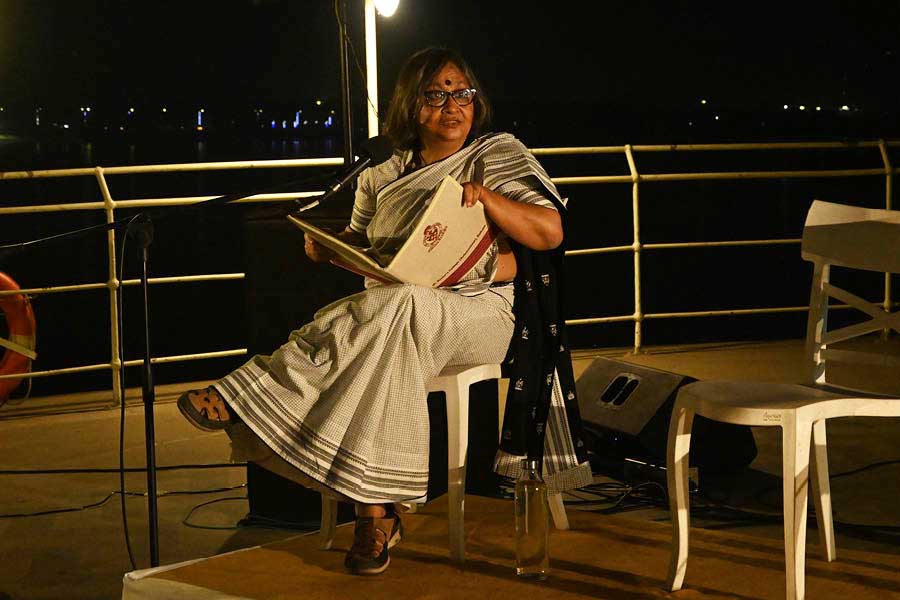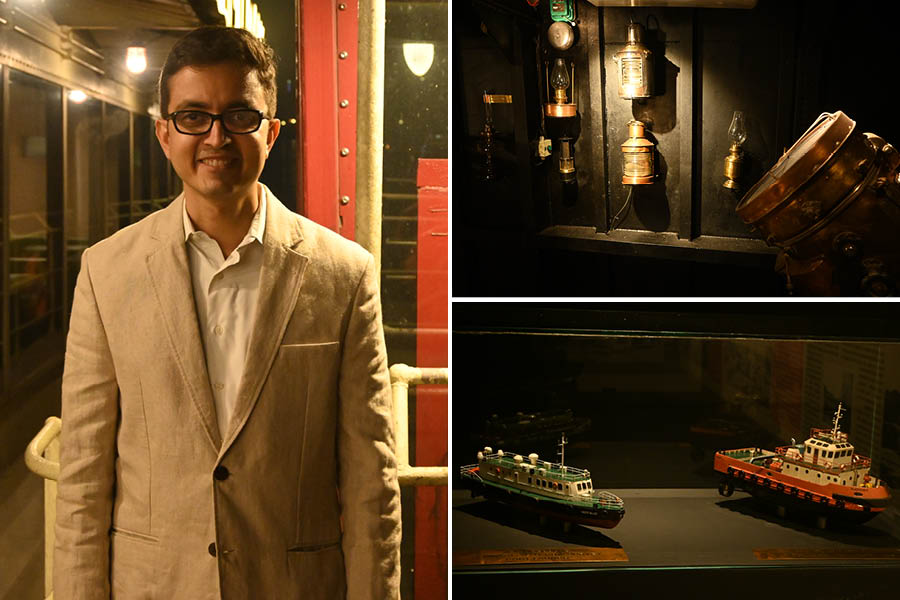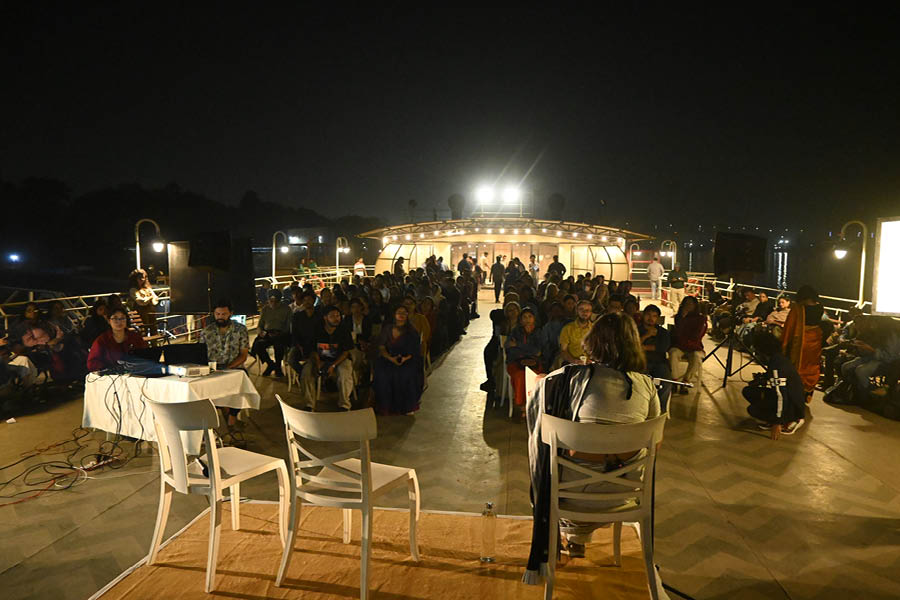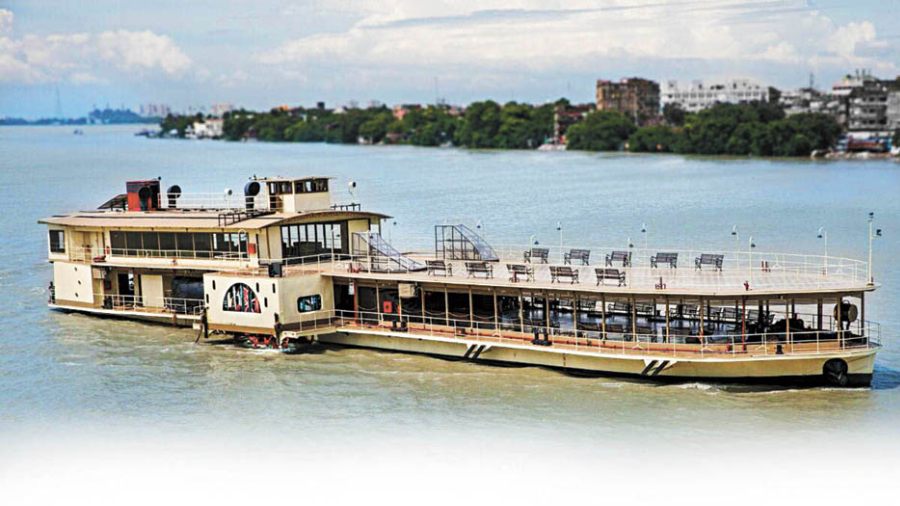A sparkling view of the Hooghly made for the perfect setting as Kolkata discussed the history of Europeans, who came to the city with intentions that weren’t colonial. Soon after, a gypsy jazz concert lit up The Bengal Paddle, as the restored steamer facilitated The White ‘Other’, a unique event hosted by DAG as a part of their ongoing annual festival, The City as a Museum. My Kolkata brings you a glimpse of what went on at the deck on November 20.
The event was anchored by historian and archivist Sarmistha De, who shared stories of Europeans who lived without a permit from the East India Company, but still enjoyed the opportunities created by the British Empire. “The East India Company was known to have a strict policy, forbidding Europeans to reside in India without a licence from the Court of Directions. The authorities observed great caution while issuing this licence, wherein immigrants had to state the occupation they would be following, and local authorities were instructed to send them back if they deviated to another profession,” said De.

‘It is quite likely that Francois Baltazard Solvyns arrived in Kolkata at the very ghat that we’re at today, way back in 1791,’ said historian Sarmistha De
William Hodges, who was the first official landscape artist for the Company in India was famous in London, leading to Warren Hastings promptly issuing him such a permit. Similarly, many other artists, like Tilly Kettle and John Zoffany, had established their place in Kolkata by the 18th century. However, things weren’t so easy for a certain Flemish artist, who was onboard The Etrusco, a cargo ship that had set sail from Ostend in 1791.
Francois Baltazard Solvyns (F. B. Solvyns) was in his 30s when he first arrived in the city, hoping to make a fortune. He was armed with great talent. The only hitch? He didn’t have a permit from the Company. “Unlike artists like Zoffany, Solvyns wasn’t given membership to niche spaces like the Asiatic Society of Bengal. Despite coming from a respected family in Antwerp, he remained an outsider to the city’s European society,” De explained.

Mukul Singhee, co-founder of the Bengal Paddle, was all smiles while showing people the jetty’s newly restored museum. ‘An event like this reinforces our purpose to restore heritage rather than build something new. We’re glad to see people share our passion for heritage,’ he said
Historians argue that the uniqueness of his art as opposed to his contemporaries can be attributed to how the city’s European society left Solvyns on the margins. She added, “Because he was given limited access to the White Town, Solvyns explored parts of the city that were neglected by Europeans. He created a record of all these diverse ethnic groups and their way of life.” These artistic works are valued among the first few visual ethnographic records of the city’s people by a European.
As a trained marine painter, Solvyns spent a great deal of time decorating palanquins in both European and Indian styles. This also helped him get by, whenever he was short on commissions. In fact, when he arrived in the city, he was first employed as a decorator at Steuart and Co.
Solvyns story is but one of many, where many Europeans lead lives not only of marginalisation, but sometimes, misery. The opulence of the white elite was a stark contrast to them, who decayed on the fringes.

Gypsy jazz band The Big Other entertained the audiences with their music, based upon the themes of the session
After the session, the audience was brought to their feet with a riveting concert by The Big Other. The riverfront’s mesmerising ambience perfectly complemented their unique soundscape, peppered by the stories behind the songs, all of which were influenced by sea, Europeans, or Europeans at sea. “Tonight’s show was special, because we addressed some of the things that the speakers brought forth with our music. We’re very grateful to DAG for the opportunity,” a band member said.
“It was a perfect, cool evening on the river on board the Bengal Paddle. Thanks to the anecdotes shared by Sarmistha De from the punch houses and sailors’ homes, tales from ‘grey town’ through the artworks of F. B. Solvyns, and gypsy jazz tunes by The Big Other, we were transported to the fascinating world of the ‘low’ Europeans of colonial Calcutta,” signed off Sumona Chakravarty, vice-president of museums at DAG.
You can find out more about European settlers in the city, along with Solvyns’ art in the DAG Collection.


